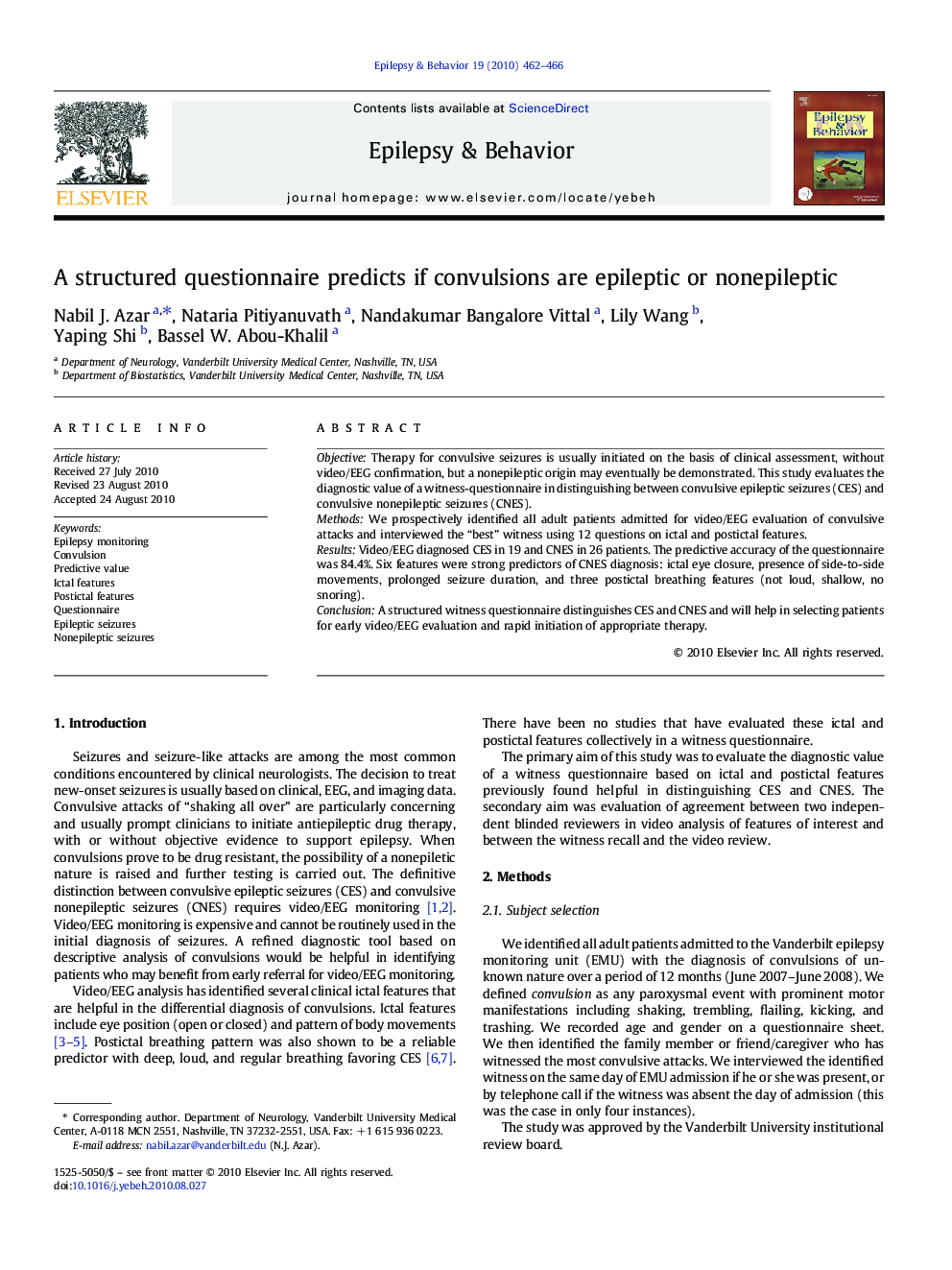| Article ID | Journal | Published Year | Pages | File Type |
|---|---|---|---|---|
| 3050106 | Epilepsy & Behavior | 2010 | 5 Pages |
ObjectiveTherapy for convulsive seizures is usually initiated on the basis of clinical assessment, without video/EEG confirmation, but a nonepileptic origin may eventually be demonstrated. This study evaluates the diagnostic value of a witness-questionnaire in distinguishing between convulsive epileptic seizures (CES) and convulsive nonepileptic seizures (CNES).MethodsWe prospectively identified all adult patients admitted for video/EEG evaluation of convulsive attacks and interviewed the “best” witness using 12 questions on ictal and postictal features.ResultsVideo/EEG diagnosed CES in 19 and CNES in 26 patients. The predictive accuracy of the questionnaire was 84.4%. Six features were strong predictors of CNES diagnosis: ictal eye closure, presence of side-to-side movements, prolonged seizure duration, and three postictal breathing features (not loud, shallow, no snoring).ConclusionA structured witness questionnaire distinguishes CES and CNES and will help in selecting patients for early video/EEG evaluation and rapid initiation of appropriate therapy.
Research Highlights► Structured witness-questionnaire is helpful in distinguishing whether convulsions are epileptic or nonepileptic. ► The “best witness” is usually reliable in describing features. ► Highly predictive ictal features: eyes, side-to-side movements and seizure duration. ► Highly predictive postictal breathing: depth, loudness, and snoring. ► The SIPQ is a questionnaire with high predictive diagnostic accuracy.
